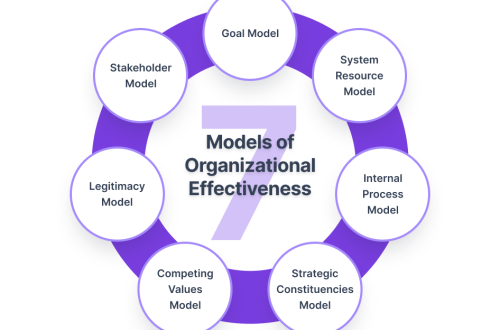In a world where markets shift overnight and technologies rewrite the rules of competition, modern business strategy is no longer a static plan on a shelf — it’s a living system that adapts, measures, and reinvents itself. This article explores how strategic thinking has evolved, why it matters today, and how organizations can design resilient strategies that win in the digital age.
Introduction: From Long Plans to Living Strategies
Business strategy historically meant a five- or ten-year plan: deliberate, linear, and top-down. Today strategy is iterative, data-driven, and deeply tied to culture, technology, and customer ecosystems. The shift reflects larger economic and social forces: rapid technological progress, global interconnectedness, shorter product cycles, and increasing customer expectations. Understanding this evolution helps leaders create strategies that scale, adapt, and sustain competitive advantage.
Historical Foundations: Where Modern Strategy Began
Classical roots: military analogies and industrial scale
Early strategic thinking borrowed heavily from military theory—Sun Tzu, Clausewitz—and from the industrial age’s emphasis on scale and cost leadership. Strategy focused on:
- Resource allocation (where to invest),
- Market positioning (who to serve), and
- Operational efficiency (how to produce cheaper and faster).
The rise of competitive frameworks
In the latter half of the 20th century, frameworks like Porter’s Five Forces and SWOT analysis turned strategy into a structured discipline. These models emphasized industry structure, competitive forces, and sustainable advantage, shaping decades of corporate decision-making.
The Drivers of Change: Why Strategy Had to Evolve
Several macro trends forced strategy to evolve from static planning to dynamic orchestration:
1. Technology acceleration
Rapid advances in cloud computing, mobile, analytics, and now AI have compressed product cycles and enabled new business models. Technology is no longer an enabler only; it is often the strategy.
2. Data abundance and analytics
Organizations now possess unprecedented data about customers, operations, and markets. Data-driven decision-making turns strategy into a cycle of hypothesis, measurement, and refinement.
3. Globalization and interconnectedness
Markets and supply chains are globally linked. Strategic choices must account for geopolitical risk, international partners, and cross-border competition.
4. Customer empowerment
Customers now expect personalized experiences, rapid response, and social proof. Customer-centric strategy requires ongoing feedback loops and rapid adaptation.
5. Sustainability and social expectations
Environmental, social, and governance (ESG) concerns influence customer choice and regulatory risk. Strategy now includes societal impact as a core dimension.
Modern Strategic Frameworks: From Static Plans to Agile Playbooks
Porter vs. Platform: old and new lenses
Traditional frameworks emphasize industry structure and firm positioning. Modern firms supplement these with platform thinking—designing ecosystems that connect users, partners, and developers to create network effects.
Blue Ocean Strategy and value innovation
Rather than battling in crowded markets, Blue Ocean encourages firms to create new demand spaces through value innovation—simultaneously increasing value for customers and lowering costs.
Agile and Lean Startup methodologies
Influenced by software development, Agile brings iterative planning, cross-functional teams, and short feedback cycles to strategic execution. The Lean Startup approach—build, measure, learn—applies to new ventures inside established firms: rapid prototyping, validated learning, and pivoting when necessary.
Objectives and Key Results (OKRs)
OKRs translate strategy into measurable outcomes. By aligning ambitious objectives with quantifiable key results, organizations maintain strategic focus while enabling flexibility in execution.
Organizational Design: Aligning Structure and Strategy
Strategy fails when structure and incentives remain misaligned. Modern strategy demands organizational changes:
Cross-functional teams and networked structures
Rigid hierarchies give way to cross-functional squads and network structures that increase speed and communication across functions—product, data, marketing, operations.
Decision rights and governance
Clear decision rights speed execution. Successful organizations push empowerment downward while keeping governance that ensures alignment with strategic intent.
Culture as a strategic asset
Culture determines whether a strategy can be executed. Cultures that reward experimentation, learning from failure, and customer obsession produce durable strategic advantages.
Execution: From Strategy Formulation to Operational Rhythm
A good strategy must be turned into daily behavior. Key execution practices include:
Translating vision into roadmaps
Strategic priorities must decompose into product roadmaps, revenue plans, and operational initiatives with owners and timelines.
Continuous measurement and adaptation
Using real-time dashboards, A/B tests, and cohort analysis, teams validate assumptions and iterate. Measurement frameworks include:
- Financial KPIs (revenue growth, margin expansion)
- Customer metrics (NPS, churn, LTV)
- Operational metrics (cycle time, defect rates)
- Strategic indicators (market share, platform engagement)
Resource agility and dynamic budgeting
Modern firms adopt rolling forecasts and dynamic resource allocation. Instead of fixed annual budgets, funds flow toward high-impact experiments and scaling initiatives.
Technology as Strategy: Digital Transformation and Platforms
Technology isn’t just a tool—it’s a core strategic choice.
Platform economics
Platforms leverage network effects, creating self-reinforcing growth as users attract users. Strategic choices include:
- Which side(s) of the market to subsidize
- How to monetize (transactions, subscriptions, advertising)
- How to govern the ecosystem
Data strategy and analytics maturity
A robust data strategy includes data governance, analytics capabilities, and ethical use policies. Firms that harness predictive analytics and personalization gain outsized advantages.
Automation and AI
Automation reduces cost and improves consistency, while AI enables new offerings and insights. Strategic adoption focuses on business outcomes rather than technology for its own sake.
Sustainability and Ethics: Strategy Beyond Profit
Modern strategy integrates ESG into core value creation:
- Sustainable supply chains reduce risk and appeal to conscious consumers.
- Ethical AI and data practices preserve trust and reduce regulatory exposure.
- Purpose-driven strategies attract talent and strengthen brand equity.
Embedding sustainability influences product design, sourcing decisions, and even market entry strategies.
Measuring Strategic Success: KPIs, Leading Indicators, and Learning Metrics
Traditional metrics (profit, ROI) remain essential, but modern strategy relies on leading indicators and learning metrics:
- Leading indicators: trial signups, activation rates, sales pipeline velocity.
- Learning metrics: the speed of validated experiments, number of pivots informed by customer insights.
- Balanced scorecards combine financial and non-financial measures to give a full picture of strategic health.
Common Strategic Pitfalls and How to Avoid Them
- Over-planning and under-executing: avoid massive plans that never adapt; favor modular pilots.
- Analysis paralysis: use minimum viable experiments to learn quickly.
- Misaligned incentives: align compensation with strategic outcomes, not just short-term targets.
- Ignoring culture: invest in change management and leader role-modeling.
- Treating technology as discrete projects: integrate tech into core business models and KPIs.
Implementing a Modern Strategy: A Practical Checklist
- Define clear, time-bound objectives using OKRs.
- Create cross-functional teams with explicit decision rights.
- Set up data observability and real-time dashboards.
- Adopt rolling forecasts and flexible resource allocation.
- Launch rapid experiments with clear success criteria.
- Explicitly articulate culture norms and rewards for learning.
- Embed ESG criteria into product and supplier decisions.
- Invest in platform and partnership strategies when network effects matter.
Looking Forward: Emerging Trends Shaping Strategy
AI-first business models
AI will move from augmentation to core product features—automating knowledge work, enabling hyper-personalization, and powering new services.
Decentralized and composable organizations
Organizations will increasingly be composable: modular capabilities stitched together through APIs and partnerships rather than built wholly in-house.
Experience economy and attention as currency
Strategy will prioritize holistic customer experience, where attention and engagement become primary assets.
Regulations and geopolitical fragmentation
Firms must design strategies resilient to regional regulations and supply chain fragmentation—localization and scenario planning become strategic imperatives.
Conclusion: Strategy as a Continuous Capability
The evolution of modern business strategy reflects a shift from static plans to continuous capability: the ability to sense change, make rapid decisions, test assumptions, and scale what works. Strategy today is equal parts vision, data, technology, organization, and culture. Organizations that cultivate these capabilities—paired with disciplined execution—will be the ones that thrive in an era of perpetual change.
Frequently Asked Questions (FAQ)
Q1: How often should a company revisit its core strategy?
Companies should revisit strategic priorities continuously through quarterly reviews, with deeper strategic refreshes annually. The cadence depends on industry volatility—high-tech and consumer sectors may require more frequent adjustments.
Q2: Can small businesses use the same strategic frameworks as large enterprises?
Yes. Frameworks like Lean Startup, Blue Ocean, and OKRs scale down well. Small businesses benefit from rapid experimentation and close customer feedback—advantages that can accelerate strategy refinement.
Q3: How do you measure the success of a strategic experiment?
Define clear success criteria before launching: target metrics (conversion uplift, retention rate), statistical significance thresholds, and time windows. Combine quantitative results with qualitative customer feedback to decide whether to scale or pivot.
Q4: What role does leadership play in modern strategy?
Leadership sets the strategic intent, allocates resources, and models cultural behaviors. Effective leaders prioritize learning, empower teams, and maintain alignment while tolerating calculated risks.
Q5: How should companies balance short-term financial goals and long-term strategic investments?
Use dual-track planning: protect core cash flows while allocating a fixed percentage of resources to strategic bets and experiments. Rolling forecasts and scenario planning help balance immediate performance with future positioning.
Q6: When is a platform strategy appropriate?
A platform strategy is suitable when network effects can be realized—i.e., when value increases as more users participate. Consider platform economics if you can enable interactions between two or more distinct user groups (e.g., buyers and sellers).
Q7: How can companies ensure their AI/data strategy remains ethical and compliant?
Implement a governance framework that covers data privacy, bias mitigation, transparency, and human oversight. Regular audits, impact assessments, and clear accountability structures help maintain ethical standards and regulatory compliance.





